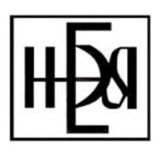DIMENSI KOSMOLOGIS GEDUNG PUSAT (BALAIRUNG) UNIVERSITAS GADJAH MADA
Hastangka Hastangka(1*)
(1) Universitas Gadjah Mada
(*) Corresponding Author
Abstract
This article discusses the cosmological dimension of Universitas Gadjah Mada's Central Building (UCB) to explore the cosmological space in its architecture, how meaning of the space is constructed, and how the vertical and horizontal space division constructs its cosmological structure. The result of study found that the cosmological space dimension of the UCB consists of symbols which represent harmony and balance between the nature, human and God. The UCB was built based on the concept of abstract and symbolical space. The abstract space can be interpreted as a contextualization of harmonism values between human and nature. While the symbolical space can be interpreted as a contextualization of philosophical concept on imaginary line between Hinduism-Buddhism and Java. Relationship between religion and culture of Hinduism-Buddhism and Java had developed and influenced construction of the building. The UCB architecture contains dimension of macrocosm and micro- cosm space.
Keywords
Full Text:
PDFReferences
Adrongi, 1986, Kosmologi Filsafat Alam Semesta, Bintang Fajar, Yogyakarta.
Audi, Robert, 1999, The Cambridge Dictionary of Philosophy Second Edi- tion, Cambridge University Press, London.
Aswad-el dan Sayed-el, 1997, “Archaic Egyptian Cosmology”, Source:Anthropos, Bd. 92, H. 1./3. (1997), pp. 69-81 Published by: Anthropos Institute. Stable URL: http://www.jstor.org/sta ble/40465357. Accessed: 29/12/2013 06:38.
Chen, Xiangqiao dan Wu, Jianguo, 2009, “Sustainable Landscape Ar- chitecture: Implication of the Chinese Philosophy of “Unity of Man with Nature” and Beyond”, dalam Research Article, Landscape Ecol, 24: 1015–1026 DOI 10.1007/s10980-009-9350- z.
Concise Routledge Encylopedia of Philosophy.
Glasersfeld, Ernst von, 1984, “Thought about Space, Time and the Con- cept of Identity”, dalam A. Pedretti (Editor): A Book Confe- rence, Princelet Editions, Zürich, Switzerland, hal. 21–36.
Hardjoso, Projopangarso, 2013, “Keterangan Mengenai Gedung Induk (Pusat) Universitas Gadjah Mada”, dalam Sutaryo dan Heri Santoso (Penyunting), Filosofi Gedung Pusat, PSP Press, Yogyakarta.
Kak, Subhash, “Space and Cosmology in Hindu Temple”, Makalah pada Vaastu Kaushal: International Symposium on Science and Technology in Ancient Indian Monuments, New Delhi, 16-17 November 2002.
Mashuri, 2010, “Pewujudan Konsep dan Nilai-nilai Kosmologi pada Bangunan Rumah Tradisional Toraja”, dalam Jurnal “Ruang” Volume 2 Nomor 1 Maret 2010.
Plumley, J.M., 1975, “The Cosmology of Ancient Egypt”, dalam Ancient Cosmologies, Blackee and Loewe (Editor), George Allen & Unwin Ltd., London.
Redd, Nola Tylor, 2011, “What is Cosmology? Definition and History”, dalam http://www.space.com/16042-cosmology.html, diakses 11 June 2011.
Runes, Dagobert D (editor), 1962, Dictionary of Philosophy, Littlefield Adams and co., New Jersey.
Rapoport, A., 1969. House, Form and Culture. Prentice-Hall Inc., Engelwood Cliffs, New Jersey.
Suwito., Sri, Yuwono, 2007, ”Konsistensi, Kontekstualisasi dan Aktualisasi Nilai-nilai luhur UGM”. Lokakarya Nilai-nilai Luhur UGM: Refleksi dan Realisasi. Balai Senat UGM, 27 Juni 2007.
Soekarno, 2013, “Pidato Peresmian Gedung Pusat UGM 19 Desember 1959” dalam Sutaryo dan Heri Santoso (Penyunting) Filosofi Gedung Pusat, PSP Press, Yogyakarta.
Internet:
Http://www.andersoninstitute.com/philosophy-and-time.htm, diakses 28 Desember 2013.
Http://en.wikipedia.org/wiki/Space, diakses 28 Desember 2013.
Http://www.oxforddictionaries.com/definition/english/space, diakses 29 Desember 2013.
Http://timeo-habla.blogspot.com/2008/09/cosmology-and-anthropologytowards.html, diakses 28 Desember 2013.
Http://stooikile.wordpress.com/2013/02/05/10-kriteria-dasar-rumah-ber-feng-shui-baik/ diakses 28 Desember 2013.
Article Metrics
Refbacks
- There are currently no refbacks.
Copyright (c) 2018 Jurnal Filsafat
Jurnal Filsafat Indexed by:
Jurnal Filsafat ISSN 0853-1870 (print), ISSN 2528-6811 (online)















